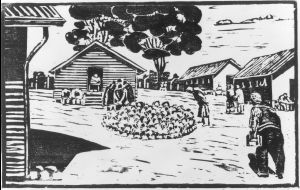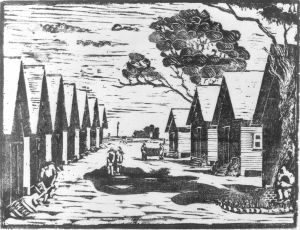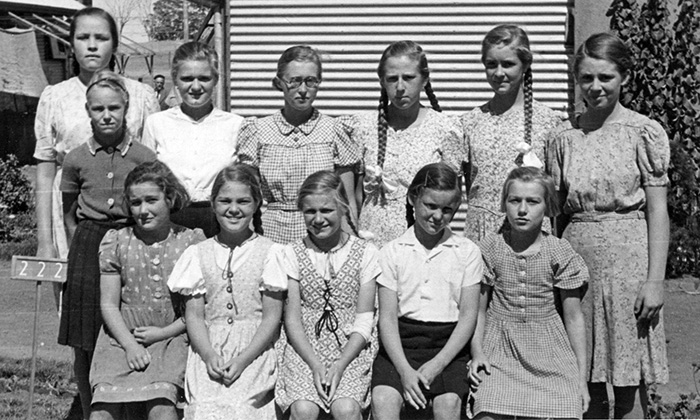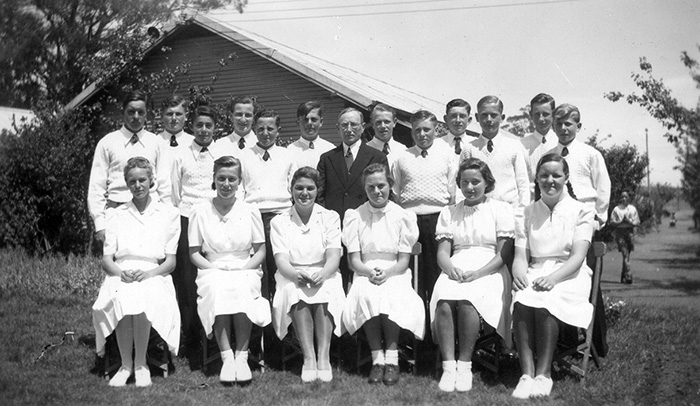![]()
Tatura Internment Camp
During the Second World War many German and Austrian civilians and soldiers were sent to internment camps and Prisoner-Of-War camps in Australia. These camps had to be located far from Australian cities and the coast and the people in the camps were not to have contact with Australians. In the Tatura area in the north-east of Victoria camps were set up and the internees and prisoners of war received the same food and accommodation as the Australian Army soldiers guarding them.
The Germans and Austrian refugees whom the British government sent to Australia on the Dunera were also interned at Tatura. Britain had feared a German invasion and was not sure that these Germans and Austrians were not spies, despite the fact that they had fled from Nazi persecution. On the Dunera they were badly treated by the British guards. 2000 people were transported on the ship, although it was officially too small for this number.
Read poems (in German) by Dunera-passengers, about the journey and
their internment:
![]() Wer
sind wir? (Oswald Volkmann)
Wer
sind wir? (Oswald Volkmann)
![]() Good-bye
Australia (Max Zimmering)
Good-bye
Australia (Max Zimmering)
![]() They
sang on the "Dunera" (anonymous)
They
sang on the "Dunera" (anonymous)
The artist and teacher Ludwig Hirschfeld-Mack was an internee in Tatura. He produced the two woodcuts you see below, depicting the camp.
 Ludwig Hirschfeld-Mack, 1893-1965, German/Australian, Internment Camp, Tatura 1941, woodcut, 15.0/24.1cm, gift of Mrs Franz Philipp 1971, National Gallery of Victoria, Melbourne |
 Ludwig Hirschfeld-Mack, 1893-1965, German/Australian, Tatura 1941, woodcut, 14.8/19.5cm, gift of Mrs Franz Philipp 1971, National Gallery of Victoria, Melbourne |
The largest group of internees in Family Camp No.3 were the Templer-Germans
from Palestine. They were transported to Australia on the Queen Elizabeth
in 1941. They didn't know where the ship was headed for. In Family Camp No.3
they established a school, in which the children received a good education despite
the difficulties. Difficulties included lack of teaching resources and textbooks,
too little classroom space and the need to teach children of different age groups
together. However, in this school the older students were actually able to complete
their Abitur (school leaving certificate). They were able to do the following
subjects: German, English, French, Latin, Geography, History, Chemistry, Physics,
Biology, Art and Physical Education. The students' Abitur certificate
was later recognised by German universities and the University of Melbourne.
Read the report by Wilhelm Eppinger
(School Principal) on the difficulties of the camp school (1943, in German)
Photos could only be taken with the permission of the Australian camp commander and were taken by a military photographer. This is the reason for the small sign showing a catalogue number, which you can see in the photos below.

School students in Family Camp No.3

Templer - Confirmation class, 1946
See the website of Tatura Irrigation & Wartime Camps Museum.
"Werner Blaich's Story" (Werner was born in Palestine and was interned with his family in Tatura, Victoria. He stayed in Australia. Werner describes among other things the ship's journey to Australia and life in the internment camp. PDF-file, 51Kb. No Adobe Acrobat?)
(Information partly from "Tatura Heritage Trail", Association of German Teachers of Victoria, Inc., 1999. Photos: Albert Blaich Family Archive)
| Top | Back
| Chronology | Issues
| Students | Site Map |
auf Deutsch |
| Primary Sources (in German) | Bibliography
| Search |
German Australia © D. Nutting 2001